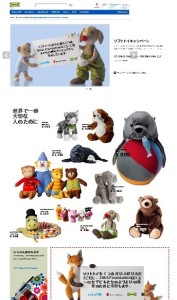When a company’s website is well-catered to its audiences’ linguistic and cultural preferences, it’s like a gold-paved, four-star experience that grandly ushers in customers.
Of course, no one wants the opposite effect resulting from copy that’s not in your audience’s native language, graphics that are offensive or confusing, or a navigation arrangement that just doesn’t resonate. Any of these website translation missteps show that you don’t understand the customer. Or worse, that you don’t care about them.
There’s no quicker way to end a deal before it even starts.
The better you understand your audience, the more effective your website translation efforts will be in resonating with your global customers—and cultivating that all-important business relationship.
So today let’s address an aspect of intercultural communication that fosters good design and savvy website translation: the difference between low-context cultures and high-context cultures.
Understanding cultures: High context versus low context
American anthropologist Edward T. Hall was known in part for identifying this notion of high-context and low-context in cultural communications. As a founding father of intercultural communication studies, Hall set up a framework of culture-based communication styles, explaining how people in different countries decode messages based on their cultural expectations.
What does all of this mean for you and your website translation initiatives? Simply that knowing the key differences between high-context and low-context cultures can give you an edge in effectively designing and adapting your website so that it strikes a chord with your global audience.
High-context cultures:
- Include Japan, Arab nations and Greece, among others.
- Emphasis is on cultural values; this may be geared to family life or working as part of a group (collectivism over individualism).
- Tends to emphasize visuals over text.
- The message’s context carries more weight than words.
- Communication tends to be viewed as an art form that’s meant to be engaged with; it may require more time to process and decode, which the audience expects and responds to.
- Learning is done through demonstration and group work.
- Messages are rooted in the past and change is slow to come.
Low-context cultures:
- Include the United States, Germany and Scandinavian nations, among others.
- A person’s identity tends to come from one’s own accomplishments rather than from group effort (individualism over collectivism).
- There’s an emphasis on words and text.
- Communication tends to be clear, direct and unambiguous.
- Privacy, personal space and individuality are highly valued.
- Learning is done through instructions and by one’s attempts to perform the action.
- Speed is prized and change happens fast.
Learning by example: IKEA and website translation techniques

Below is a screen shot of the Japanese IKEA homepage. Let’s conduct a mini-assessment:
- Heavy use of graphics; light on copy
- Scrolling graphics “slideshow”
- Bright and colorful
- Visually varied and active
While there aren’t any people on the website, we can see hints of why this might resonate with a high-context culture. The animal groupings evoke a communal or group sense. It’s also fun and colorful, and it’s generally light on text.
Now let’s consider the Netherlands IKEA homepage.
- More copy in general, plus two big, bright-red boxes featuring text to advertise sales
- Person featured in top box engaged in a solitary activity
- No scrolling graphics
- With the exception of the red sales boxes, the homepage is generally more sedate
- Visually orderly: stacked tables and boxes
Compared to the Japanese IKEA website, the localized Netherlands version does show some noticeable differences. The emphasis is on functional products rather than cute-looking stuffed animals (although there are a couple of those), and we see more text. The only person who appears on the homepage is shown by herself. There is also no scrolling graphics marquee as in the Japanese version.
Differences in design for website localization
High-context cultures have been shown to respond very well to websites that include a lot of animations, sounds, graphics and other interactive elements. Why? There are interesting theories around this based on recent research (such as in this scholarly article), one theory being that people in high-context cultures appreciate interactivity in general. It makes them feel as though they are being drawn into an experience.
When language service partners help clients with website translation projects, nuggets of insight such as this are considered. For a Chinese website, for example, we may recommend music, Flash animations or perhaps a video of an individual speaking to and welcoming the user.
In general, it’s also a good practice to think about what your target audience favors with regard to web design elements, such as hierarchical structure, menu and navigation buttons, and page-loading speed. Once you understand your target audience’s cultural expectations for visual communication and web design, you can employ effective website translation techniques.
Your task as a global marketer or website translation stakeholder is always to create materials that engage the end user, preferably by appealing to their values or pain points. A large part of that is making sure your message resonates with your target audience’s cultural preferences and expectations.
What do you think? Is the notion of high-context versus low-context cultural communication styles useful to you in conceiving of and executing your targeted marketing materials or translated website?
Read more:
- Adding Context to Content
- Best SEO Software
